Panjakent
Panjakent
Panjakent (Penjikent or Panjikent too) is situated in the wide and green Zerafshan river valley filled with vineyards, fields and orchards and has a population of about 50 000 people. Panjakent was an essential town on the Silk Road but it was already a significant and developed center more than 5000 years ago. The archaeological sites of ancient Panjakent and the nearby Sarazm tell about the wealth of the past. As the nearby Samarkand boasts with the middle age architecture, Panjakent and the Zerafshan valley offer something different from the older times and with the nearby nature sights of the Tajik Fann mountains.
The modern Panjakent town is on the banks of the Zarafshan River and it is a typical Soviet made town with wide streets, some fine civic buildings and a dramatic statue of Dewashtich. There is also a bustling bazaar and an 18th-century madrassa next to it. The old city, today abandoned, is on a hilltop to the east of the town. The Rudaki museum of Panjakent holds an excellent collection and it is a must visit for tourists together with the Rudaki mausoleum for literature lovers especially.
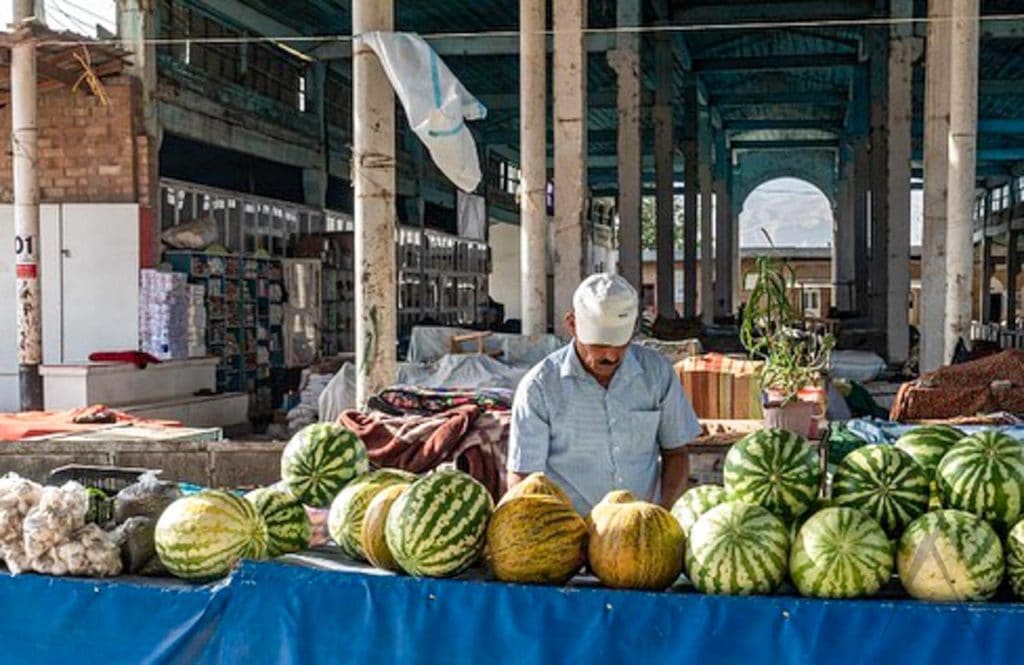
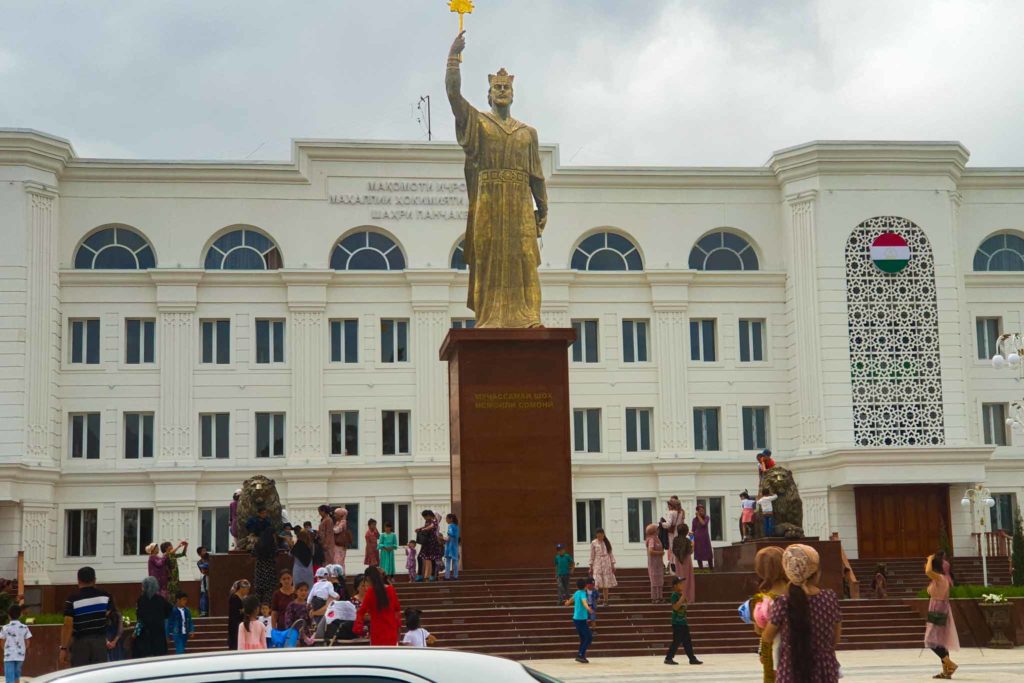
The location of Panjakent is very well strategically situated on ancient and medieval trade routes and it is the main reason for the birth of the city. It is also the center of a fertile agricultural area and gold was panned here ages ago by using sheepskins. Nowadays there are also modern gold mines in the nearby Fann mountains. There are several sights easily reached by using Panjakent as a base making it a nice option to stay here for a night or two to explore the surrounding region or. Travel to Panjakent is also very easy from Samarkand.
Panjakent sights
Panjakent’s busy bazaar has a large, decorative gateway and directly opposite is the Olim Dodho Mosque that has a multi-domed roof which reminds the Grand Bazaar in Istanbul. The best local excursion around the Panjakent is to the the charming Marguzor Lakes (Seven lakes), up to the Fann Mountains.
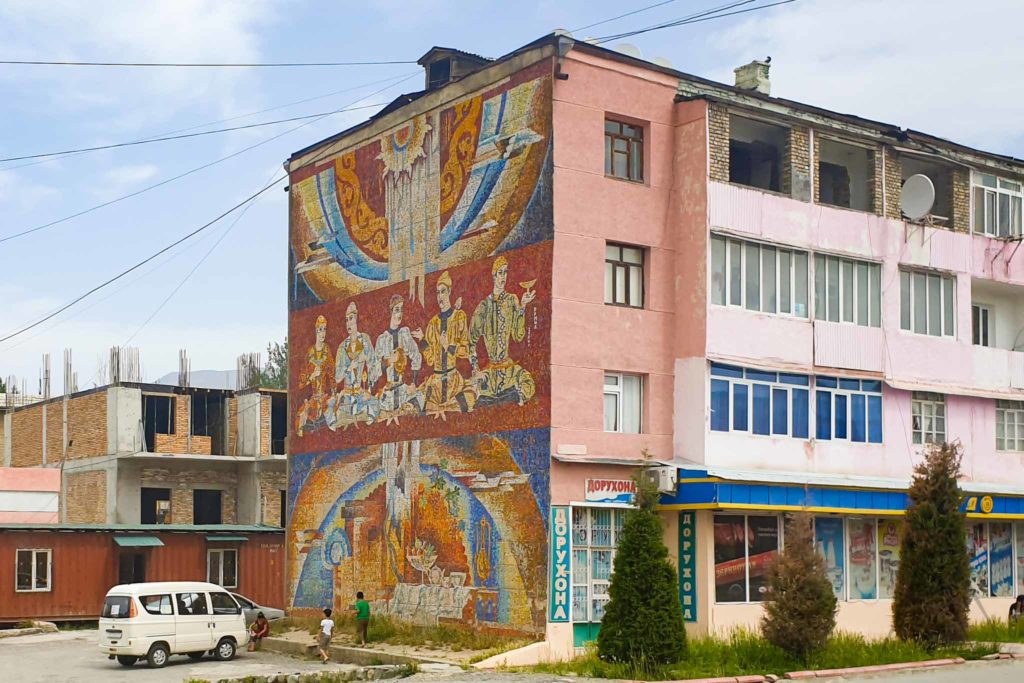
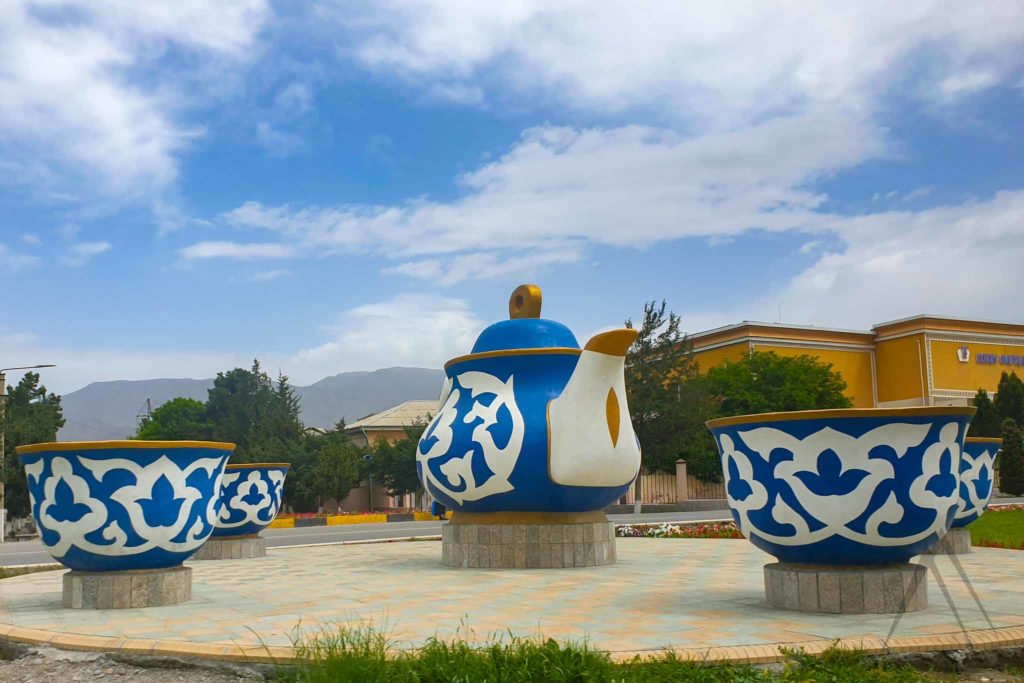
Ancient Panjakent
The ruins of ancient Panjakent lie on a terrace above the banks of the Zeravshan River, 1,5 km southeast of the new town. A major Sogdian town was founded here in the 5th century and abandoned in the 8th century. The banks of the Zarafshan River, at a vital Silk Road crossroad, were the ideal location for an ancient city to grow and flourish. At its height, the settlement was a rich trading center and one of the most cosmopolitan cities on the Silk Road.
The old Panjakent city covered at least an area of 20 hectares, with a population of about 5000. While visiting the ancient Panjakent, you can explore the faint foundations of houses, two Zoroastrian temples and the shop-lined bazaar of the main town center and citadel to the west. The palace was originally decorated with ornate hunting scenes and pillars carved in the shape of dancing girls.
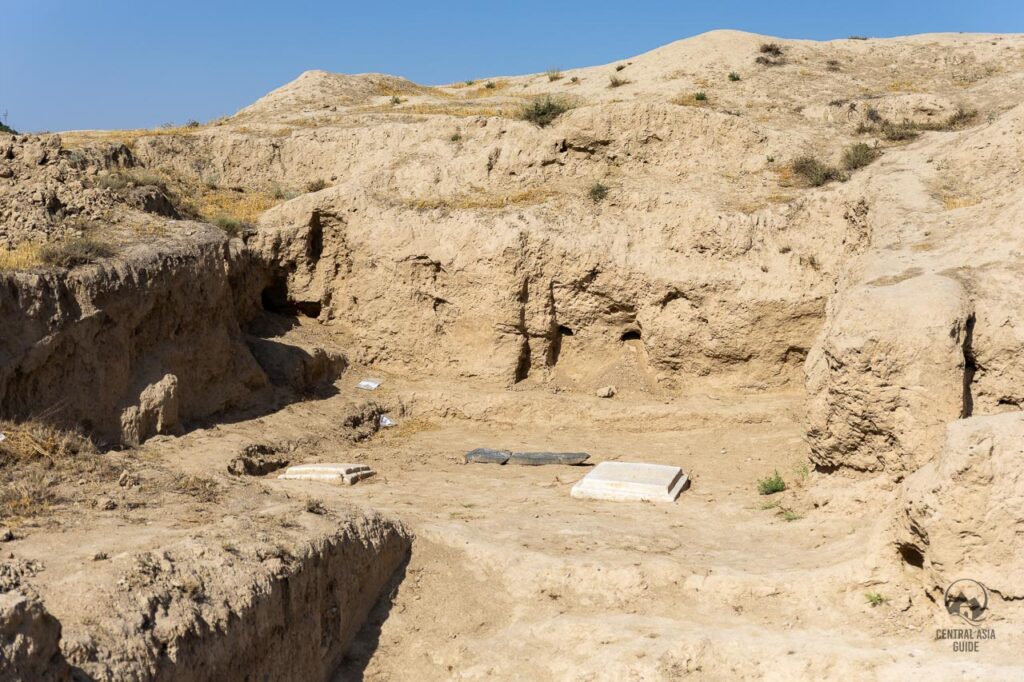
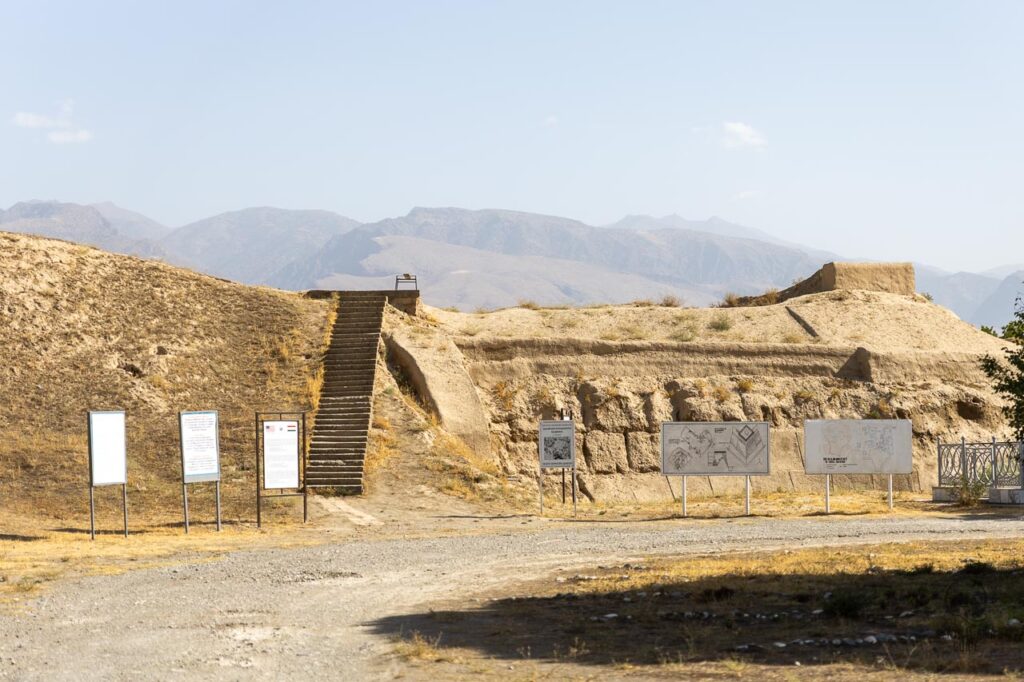
The Sogdians constructed an impregnable-looking fortress with walls 12m thick at the base and 5m high at the top (with battlements and a wide pathway to allow rapid deployment of troops) on a hill 4 km east of the modern town. The fortress had watchtowers on three sides and was protected by a steep slope on the northern side. At 1000 m it is higher than the new town in the river valley. It was a blooming time of the Silk Road cultures, with Zoroastrians, Buddhists, Manicheans and Nestorian Christians all making their unique contributions. It had two large Zoroastrian temples, with the holy fires burning continuously and a royal palace and a citadel.
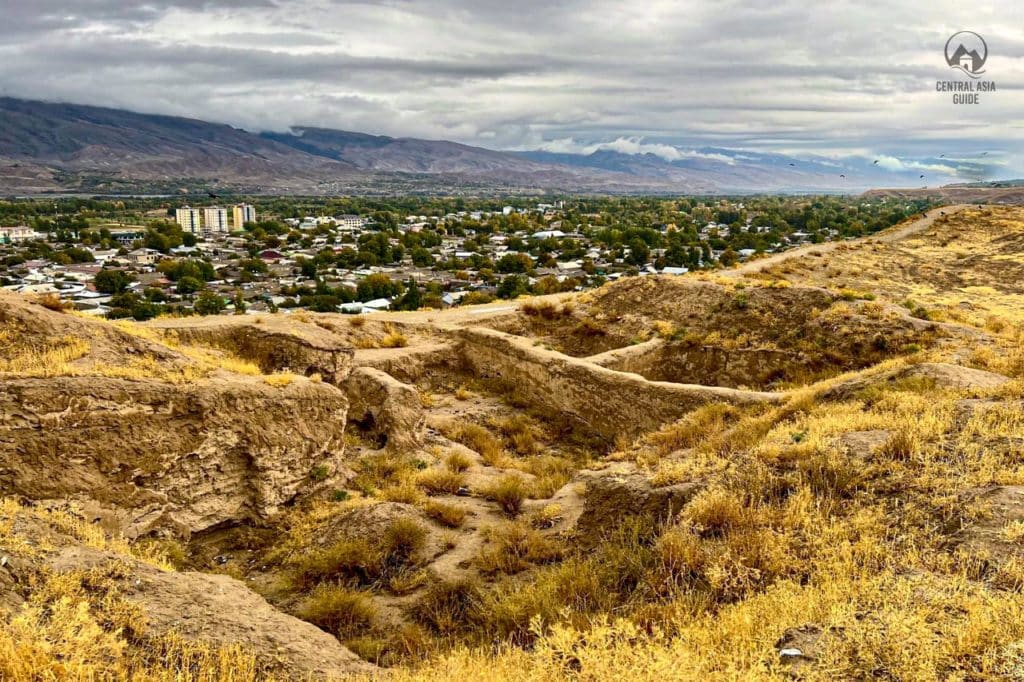
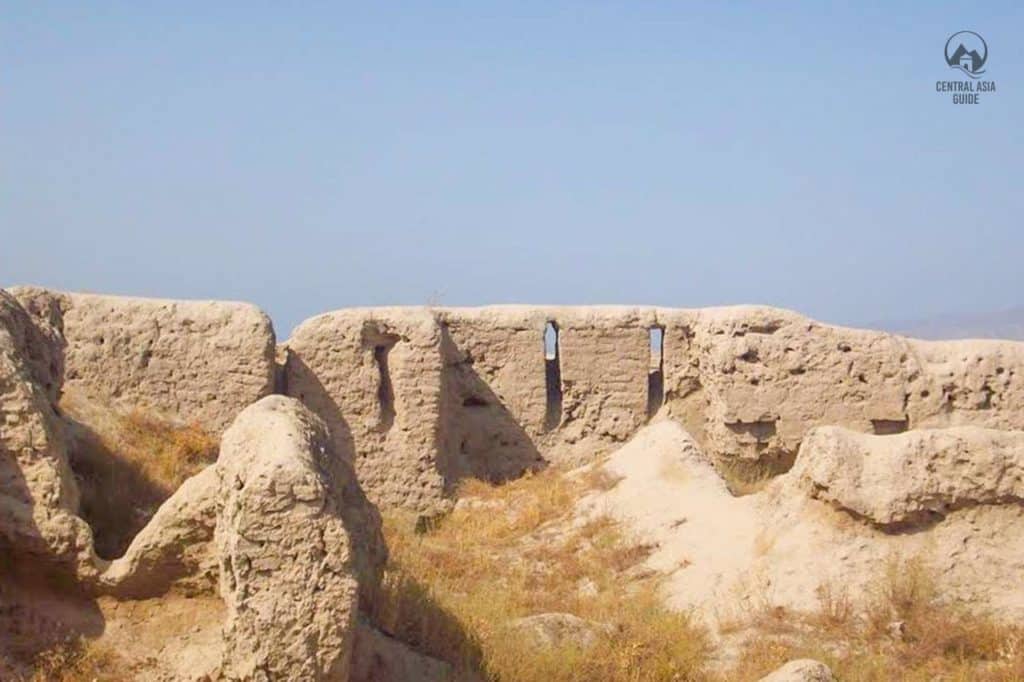
The city was attacked by the Arabs for two years and was eventually captured in 722 AD. The Arabs set fire to the city, and this act meant that Panjakent became a repository for much of what is now known about the Sogdian civilization. Many of the buildings were burnt to the ground. Rather than attempt to rebuild their luxurious palaces and temples, Panjakent’s inhabitants abandoned their city, inadvertently preserving it in time for archaeologists to uncover it more than a millennium later. The last Sogdian ruler, Dewashtich retreated into the mountains but was captured and, by one account, crucified. His followers, including women and children, were massacred as they fled Panjakent for Khujand.
Ancient Panjakent is remarkable due to the state of its preservation. Today the ruins are mostly restrained to sunbaked walls but they are worth a look, and the modern city is becoming increasingly popular as a springboard to visit the nearby Fann Mountains. Having been abandoned quickly and never built over, it is still possible to walk the streets laid out much the same way as they were the day the Arabs came. Only about half of the city’s area has been carefully excavated, with findings being removed mostly to the National Museum in Dushanbe and the local Rudaki Museum. Most impressive ones among the buildings are the citadel on top of the hill overlooking the city, the necropolis, and the fine, once multi-storied buildings where the famous frescoes were discovered. There is also a small museum next to the city ruins that houses some recent finds and more general artifacts.
Panjakent history museum
In the Panjakent history museum you can observe Panjakent’s remarkable frescoes from the ancient panjakent. It gives you a better understanding of the site of the fortress and of the life of the people who lived there. The museum is an attractive, white building with well-laid-out displays and lots of useful information.
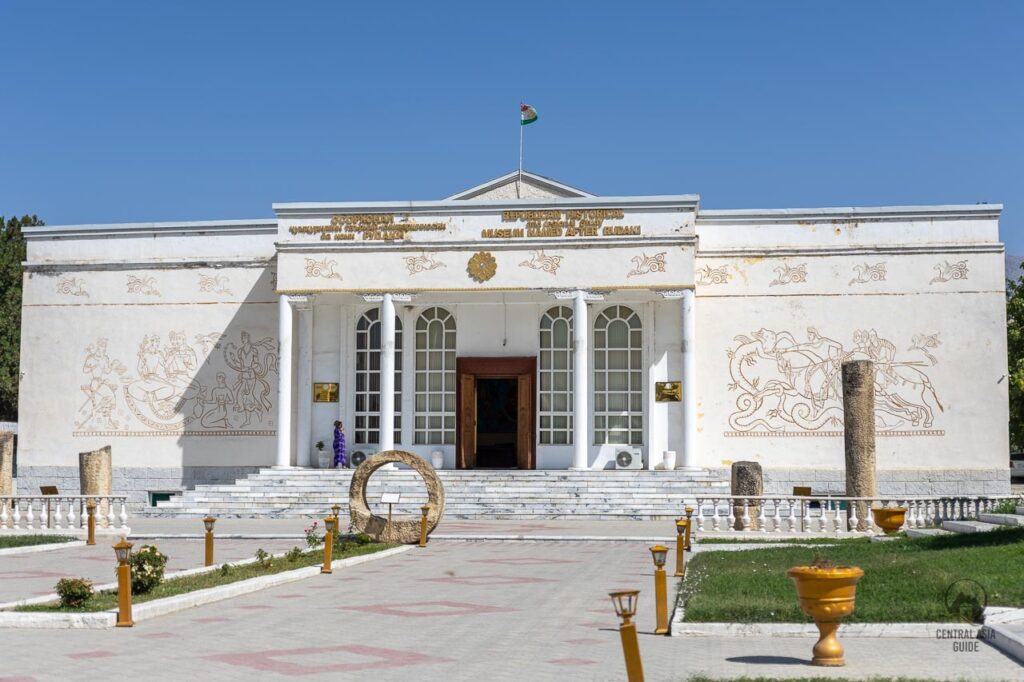
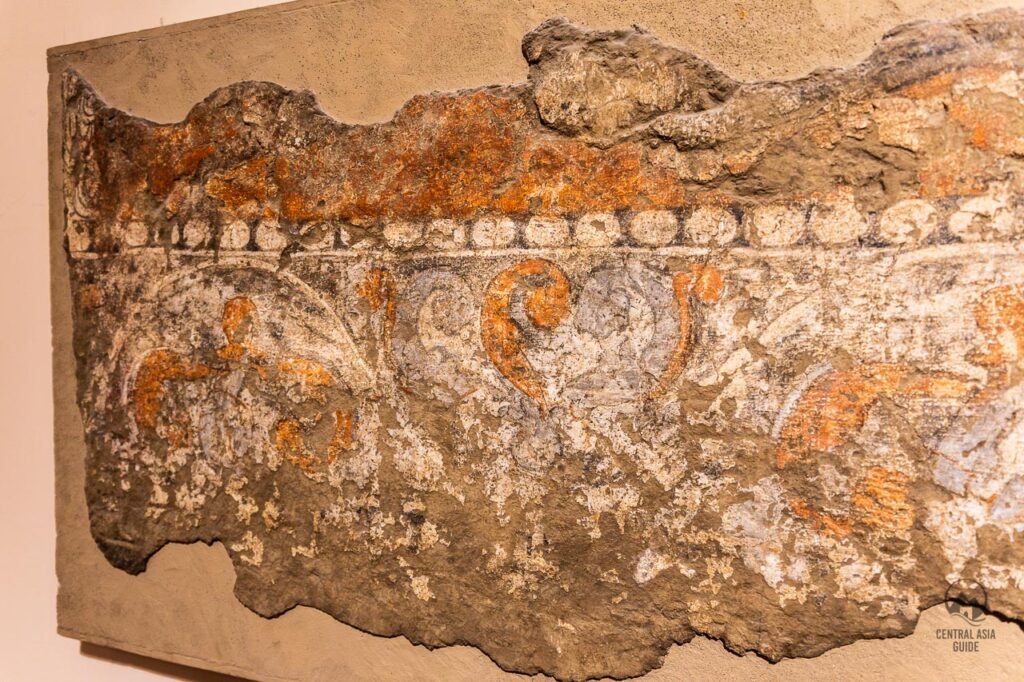
The Sogdian frescoes are undoubtedly the biggest draw and although the best and largest examples (one of which was 15m in length) have been spirited away to Dushanbe and the Hermitage Museum in St Petersburg, you can still cherish murals depicting many-headed gods, ancient heroes and the Sogdian aristocracy. Other notable artifacts include ornaments carved from wood and clay, domestic and ritual pottery, ossuaries (vessels for the bones of the dead) and altarpieces, many of which show marks of the apocalyptic fire.
Sights near Panjakent
Rudaki Mausoleum & Rudaki Museum
Rudaki was a Persian poet singer and musician and he is known as the first major poet to write and served as a court poet during the Samanid era. Rudaki’s modern mausoleum is a popular pilgrimage spot and is located 58 km east of Panjakent in the village of Panjrud, along with a small museum and a guesthouse.
The small Rudaki museum by the mausoleum presents a sculpture of Rudaki that was created by the archeologists based on his skull fragments along with other findings from the Panjakent and Sarazm sights.
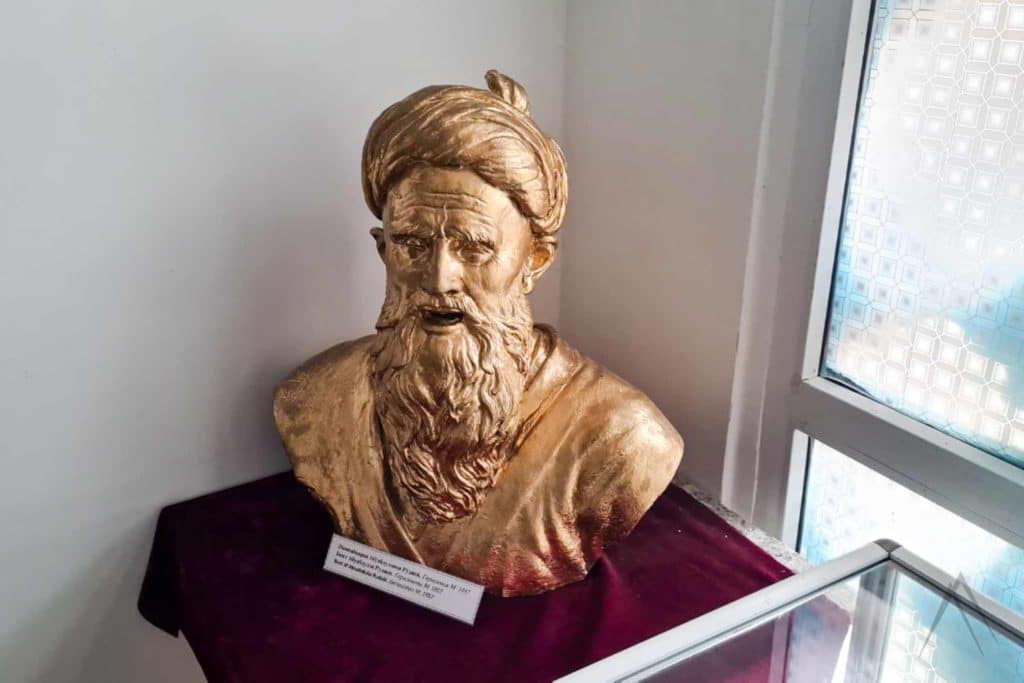
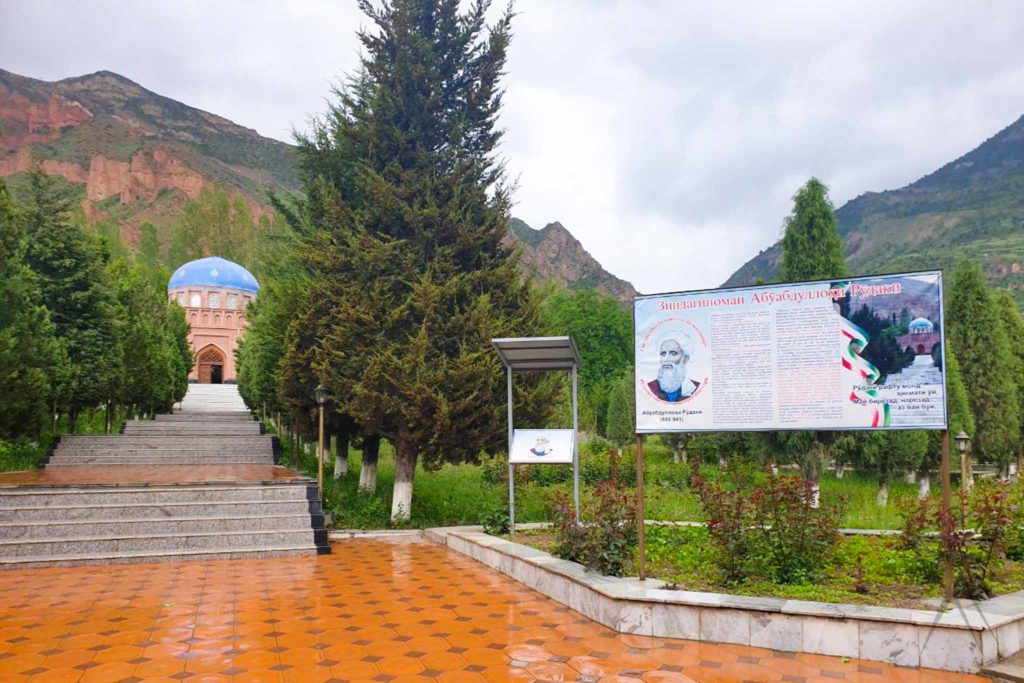
Sarazm neolithical city
About 15 km west from Panjakent one can find another important archaeological site. Sarazm is a staggering 5500 year old site that surprises with its size and sophistication of the settlement of the time. Read more about Sarazm on a separate page.
Fortresses of Dewashtich
The fortresses of the last ruler of Sogdians are not well known and therefore the villages next to them do not get many visitors making visiting the Dewashtich fortresses a great opportunity to see real Tajik mountain village life.
Mausoleum at Mazor-i Sharif
The ancient shrine of Khoja Muhammad Bashoro (born in Basra in 743) can be found 40 km east of Panjakent, in Mazor-i Sharif. The mausoleum was built in the 9th century but some additions were included in the 14th century. Inside there are the tombs of the saint together with some amazing woodcarving, including representations of fish (not allowed in modern muslim religion). This site has some similarities with the Hazrati Shoh mosque in Chorku near Isfara.
Kum and Mount Mug
On a hill above the village of Kum lies a fortress that was the scene of a battle between the Sogdians and the Arabs in AD 722. There are substantial remains of the mud brick buildings left at the site with barrel roofs. It is clear why this site was chosen for the fortress as the views from down to the Zarafshan valley are impressive.
Just before the turn-off to Kum, Dar-Dar has a lovely unrestored mosque with carved and painted ceilings.
Just west of Khairobad, is the fortress of Mount Mugh. This location has a view over the river, with steep hillsides right down to the riverbank. Here Dewashtich made his last stand against the Muslim army. To reach the fort it is advisable to take a guide from the village as climbing is required. It is also the site where 8th century documents telling about the story of Dewashtich was found.
Madm
Yet another fortress ruin site can be found in nearby Madm. This on has remains with some brickwork and the foundations of houses excavated by archaeologists. The houses here were 2-storey buildings with carved pillars.
Madm is also one of the locations in Tajikistan where one can still see lalmi. Lalmi are fields with no irrigation and rely only on rainfall. You can see them also in the nearby Shing Valley around the 7 lakes as well. They are now largely abandoned in Tajikistan due to the cheap imported food, but they are still used in Afghanistan, and can be also seen in Pamir from the road between Kulob and Khorog.
Tours including Panjakent
Travel to Panjakent
Panjakent by Bus / Taxi
The distance between Dushanbe and Panjakent is about 300 km through the Fann mountains and the city of Ayni. The minibus takes around five hours and more if the road is wet. There are two bus stands in Panjakent. The eastbound intercity buses leave from the east gate bus stand, and local buses also use the Bazaar bus stand.
Panjakent is also located just next to the Uzbek city of Samarkand and Panjakent can be easily accessed from Samarkand through the Sarazm border crossing. You can take taxi from Samarkand till the border, cross it and take another taxi from the border to Panjakent. There are also connections to Panjakent from Khujand, the northern Sughd region of Tajikistan.
Other Sights & destinations near Panjakent
Page updated 2.11.2024